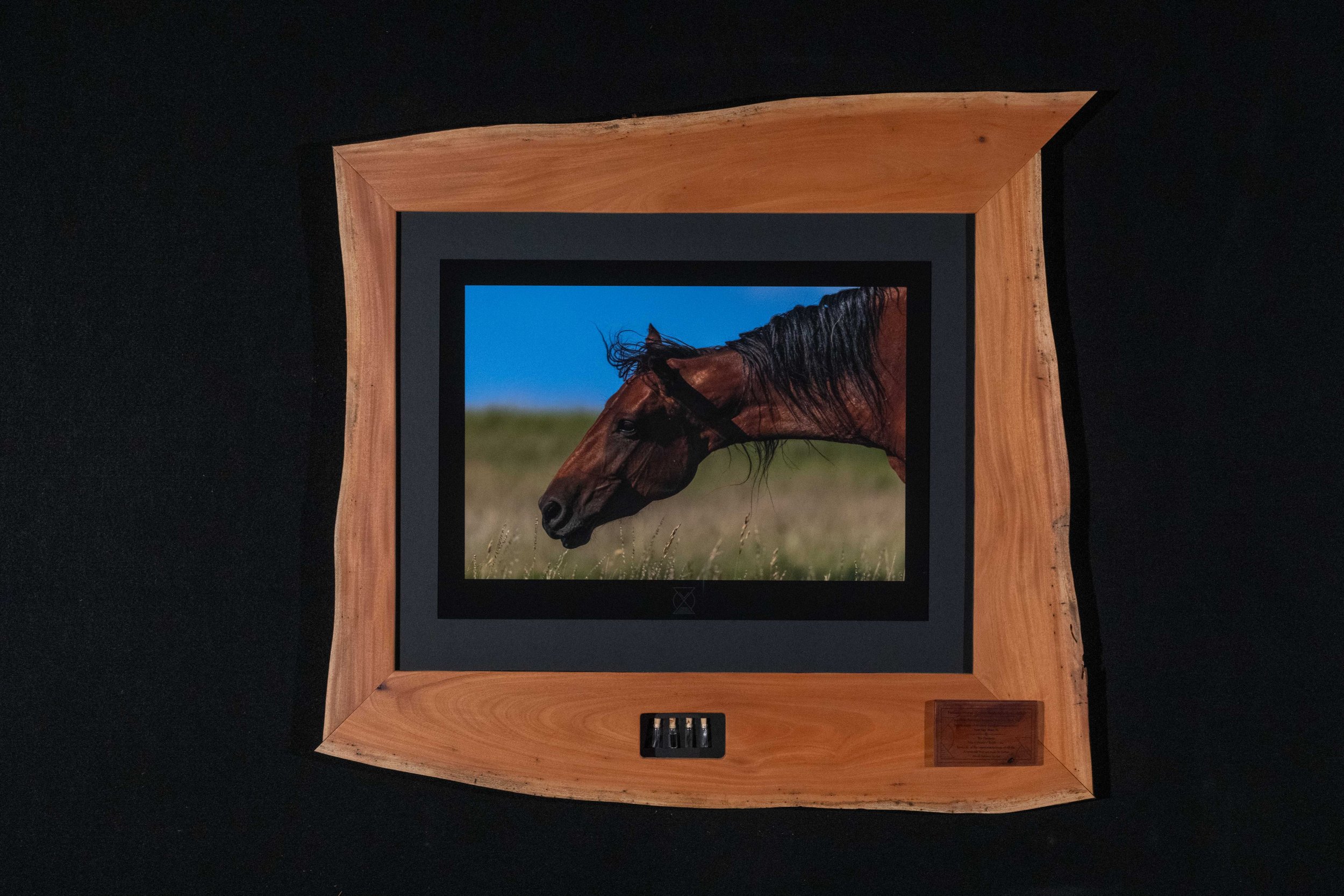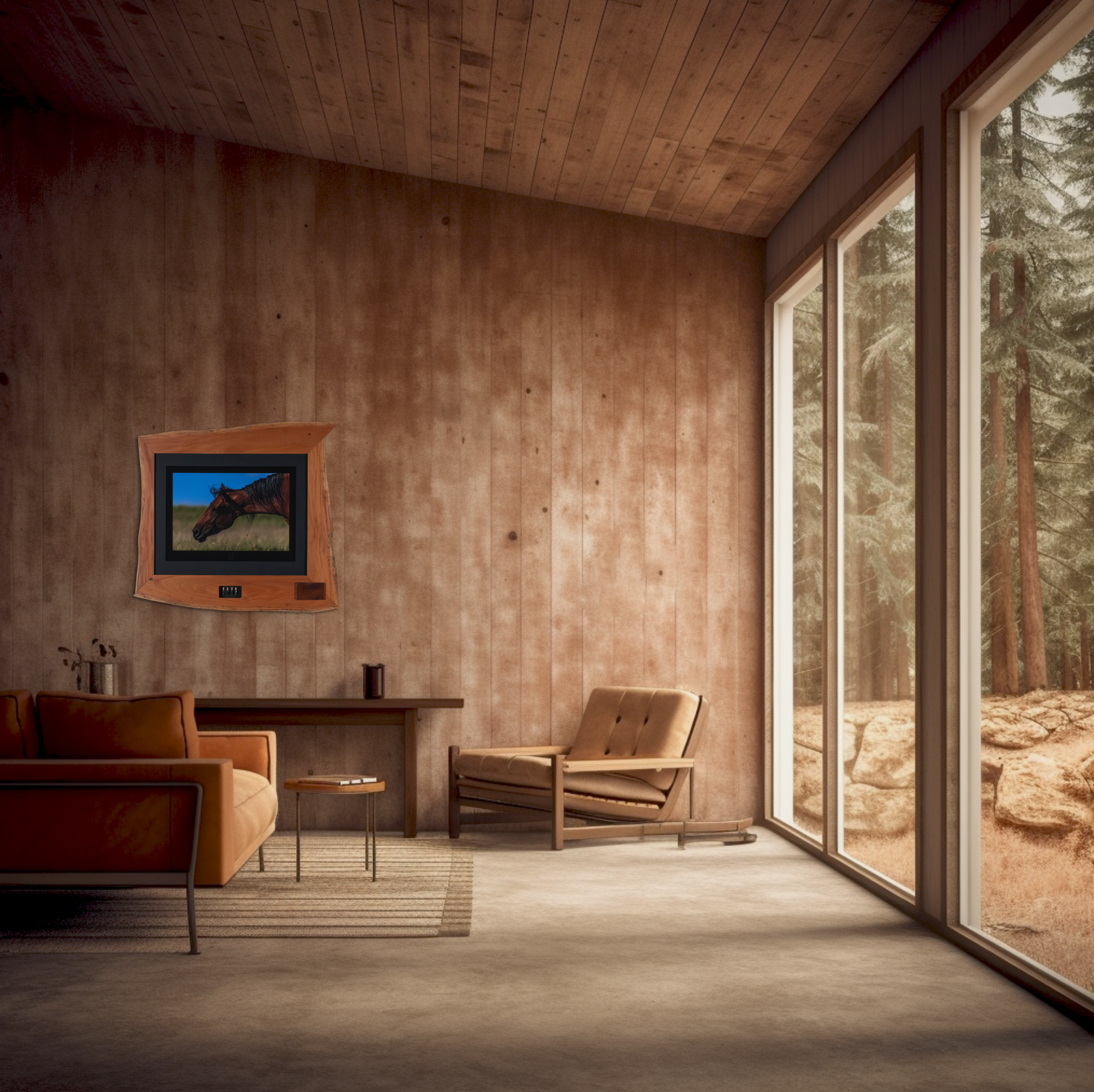Nokota Horse - Theodore Roosevelt National Park, ND




Nokota Horse - Theodore Roosevelt National Park, ND
Nokota Horse (Equus ferus caballus), Adult
I hear them all the time up at my family’s cabin, but rarely see them. I was riding around on the four wheeler and just happened to notice it perched off of the side of the trail. This photo was taken 7/18/23 at 6:30 pm.
WeForest Donation: $320 (What is this?)
Print Number: 1/3
Print Size: 15 x 22.5
Total Dimensions: 37 x 40
Hanging equipment and certificate of authenticity included.
PHOTOGRAPH
Nokota Horse (Equus ferus caballus)
This breed of Horse came about in the 19th century from a mix of native horses and Spanish horses. The Nokota Horses were nearly wiped out in the early 1900’s; however, in the creation of Theodore Roosevelt National Park, a number of bands of horses were accidentally trapped inside. This resulted in them being protected, and ended up saving the species. The park did sell off many horses at various times and the breed was preserved more widely with the founding of the Nokota Horse Conservancy in 1999. Experiencing these wild horses in their natural environment is a truly special experience. They are as different from domesticated horses as your pet dog is from a wolf in the wild.
PHOTOGRAPH
Theodore Roosevelt National Park, ND
One of the more rural National Parks in the lower 48 states, Theodore Roosevelt is located in the western part of North Dakota, due north of Badlands National Park in South Dakota. Aspects of the terrain are very similar in both parks with the bare buttes sticking up, showing histories timeline in their dirt. Theodore Roosevelt is actually divided into three units, the North, the South, and the Elkhorn Ranch Units. The South is the most frequented and largest unit. Theodore Roosevelt is more of a rolling hills environment that the dramatic buttes of Badlands, but what truly sets the more northern of the two parks apart is the fauna that resides there. The wild horses of Theodore Roosevelt National Park are my main impetus for visiting over and over. They rule this terrain, along with the ever immovable Bison that rule whatever land they are standing on.
FRAME
Cuban Mahogany (Swietenia mahagoni)
Cuban Mahogany is one of three species of Mahogany and it was originally the most widely used of the three. Nowadays, Honduran Mahogany is the much more prevalent wood and what most people would recognize as Mahogany. Native to the Carribbean, Cuban Mahogany’s northernmost range does include the far south of Florida, including the Keys. I happen to get all of my Cuban mahogany from a salvager in the Keys who removes the trees from construction sites before cutting it into slabs and drying it.
THE ELEMENTS
Fire, Water, Earth, and Air
In the display case in the bottom of the frame, four items are preserved glass vials. The items represent the elements: fire (wood charcoal), water (mineral oil), earth (soil), and air (a milkweed seed). I include these items in my work as a symbol of the interconnectedness of all life on earth, and as a reminder that humans must do better.
THE PLAQUE
I engrave a wooden information plaque for each work. The plaque includes what the photograph is of, the location of the photograph, what type of wood the frame is made of and where I got the wood from. The plaques also explain what the vials are in each display case, and even state the meaning of my logo. The plaques are attached magnetically and can be removed to read or to store on the back of each frame if you prefer not to have it displayed on the front.

